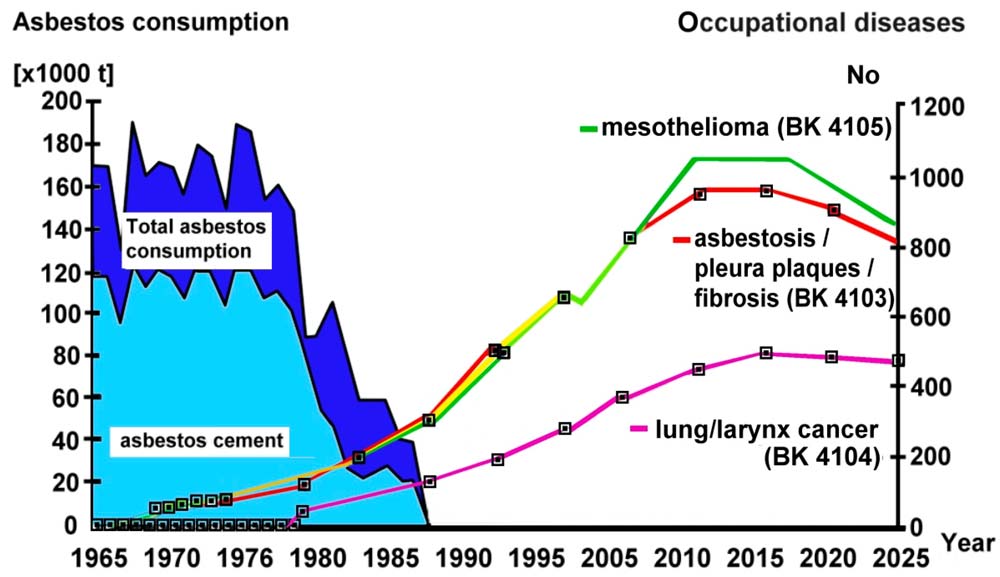1D. Health Risks of Asbestos Exposure
The health risks associated with asbestos exposure are severe and well-documented. Asbestos fibers, when inhaled, can lead to a range of serious respiratory diseases and cancers. Understanding how exposure occurs, the latency period of asbestos-related diseases, and the specific conditions linked to asbestos is crucial for managing and mitigating these risks.
How Asbestos Exposure Occurs
- Inhalation of Fibers: The primary route of asbestos exposure is through inhaling airborne fibers. These fibers can be released into the air when asbestos-containing materials (ACMs) are disturbed, damaged, or deteriorate over time. Once inhaled, asbestos fibers can become trapped in the lungs, leading to inflammation, scarring, and other serious health issues.
Latency Period
- Decades-long Delay: One of the most challenging aspects of asbestos exposure is the lengthy latency period between inhalation of fibers and the onset of disease. Symptoms can take anywhere from 10 to 50 years to manifest, making it difficult to connect exposure to the development of disease. This delay complicates both diagnosis and treatment of asbestos-related conditions.

Diseases Associated with Asbestos Exposure
- Asbestosis: A chronic lung disease characterized by lung fibrosis (scarring) caused by asbestos fibers. Symptoms include shortness of breath, persistent cough, chest tightness, and in severe cases, respiratory failure. Asbestosis is a direct result of heavy, prolonged exposure to asbestos.
- Mesothelioma: This rare and aggressive cancer affects the mesothelium, the lining of the lungs and abdomen. Mesothelioma is almost exclusively caused by asbestos exposure and has a poor prognosis. Symptoms include chest pain, abdominal pain, weight loss, and fluid accumulation around the lungs or abdomen.
- Lung Cancer: Individuals exposed to asbestos have a significantly increased risk of developing lung cancer. The risk is further elevated in smokers. Symptoms mirror those of other lung cancers, including coughing, chest pain, weight loss, and shortness of breath.
- Other Cancers: Research has shown that asbestos exposure is linked to other types of cancers as well, including laryngeal and ovarian cancer. Like lung cancer and mesothelioma, these associations underscore the carcinogenic nature of asbestos fibers.
Conclusion
The health implications of asbestos exposure are profound, affecting not just those who worked directly with asbestos materials but also individuals who may have been exposed indirectly through environmental or secondhand exposure. Understanding these risks is vital for current and future efforts to protect public health, necessitating stringent regulations and ongoing awareness.